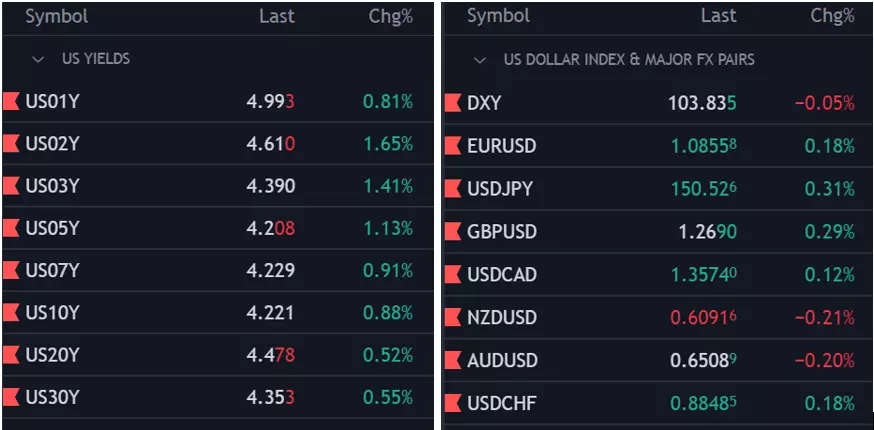
The Impact of U.S. Treasury Yield Declines on Forex Markets
The recent drop in U.S. Treasury yields, plummeting from 3.5% to 2.1%, has sent ripples through the forex market, raising concerns about the strength of the U.S. dollar. As traders adjust to these fluctuations, the implications are becoming increasingly critical. This article delves into the evolving landscape of currency pairs in the wake of declining yields and offers strategic insights for forex traders navigating this complex environment.

Current Market Context
For years, the U.S. dollar has maintained its status as a dominant global currency, buoyed by relatively higher interest rates compared to other nations. However, the substantial decline in Treasury yields has narrowed this interest rate differential, creating an environment ripe for dollar depreciation. This change is particularly relevant for major currency pairs like EUR/USD and GBP/USD, which react sensitively to U.S. economic indicators.
As of now, the U.S. dollar is facing increased scrutiny. According to FXStreet, traders are growing wary of potential shifts in the currency market, particularly with the dollar's influence waning as yields drop. The overall sentiment is shifting, and traders are urged to reassess their positions as they weigh the implications of reduced yield attractiveness against the backdrop of global economic stability.
Analysis of Currency Pairs
1. EUR/USD
The EUR/USD pair is one of the most traded in the forex market, making up about 20% of daily transactions. The recent downturn in U.S. Treasury yields could lead to upward pressure on the euro, especially if European Central Bank (ECB) policies remain steady. A weaker dollar generally supports the euro, making it essential for traders to keep a close watch on U.S. economic releases, which may influence market perceptions of both currencies.
A recent report highlighted that the euro has begun strengthening against the dollar, with analysts predicting continued volatility in the pair as market participants react to varying economic indicators from the U.S. and Eurozone.
2. GBP/USD
Similar dynamics are at play with the GBP/USD pair. As yields in the U.S. decline, the potential for a more robust performance from the British pound increases, particularly if the Bank of England (BoE) continues to signal confidence in its economic recovery strategies. According to Action Forex, the BoE's monetary policy decisions are pivotal, and any shifts towards tightening could enhance the pound's position against the dollar.
With the U.S. dollar facing downward pressure, traders should remain vigilant as they monitor the interplay of economic data from both the U.S. and the UK, particularly as the market adjusts to the changing yield landscape.
Strategic Insights for Traders
As the forex market reacts to the decline in Treasury yields, traders should consider the following strategies to navigate this evolving landscape effectively:
-
Diversification: As the U.S. dollar weakens, exploring alternative currencies can prove beneficial. Currencies like the Japanese Yen (JPY) and Swiss Franc (CHF) often serve as safe havens during periods of economic uncertainty. Traders may find these currencies more appealing as they look to hedge against potential losses in dollar-denominated assets.
-
Technical Analysis: Utilizing technical indicators can help identify potential reversal points for major currency pairs. For instance, closely monitoring moving averages, Fibonacci retracement levels, and support/resistance zones can provide traders with actionable insights as market sentiment shifts.
-
Economic Monitoring: Staying informed about upcoming economic data releases is critical. Scheduled reports on inflation, employment, and other key indicators can significantly impact currency valuations. Traders should particularly watch for Federal Reserve commentary on interest rates and economic outlooks, which can further influence the dollar's strength.
Conclusion
The decline in U.S. Treasury yields presents both challenges and opportunities within the forex market. While the U.S. dollar’s potential depreciation poses risks, it also opens avenues for traders to capitalize on movements in other currencies. By understanding the implications for major currency pairs and adapting trading strategies accordingly, forex traders can better navigate these turbulent waters.
As the market continues to evolve in response to economic conditions, remaining agile and informed will be key to effective trading. The interplay between U.S. economic data and global market dynamics will be pivotal in shaping forex strategies moving forward.

In summation, the forex market remains a complex arena where traders must adeptly interpret signals from economic shifts. The recent declines in U.S. Treasury yields serve as a crucial reminder of the interconnected nature of global finance and the need for strategic foresight in trading decisions.
For further insights and real-time updates on the forex market, resources such as FXStreet and Action Forex are invaluable tools for traders looking to stay ahead of the curve.